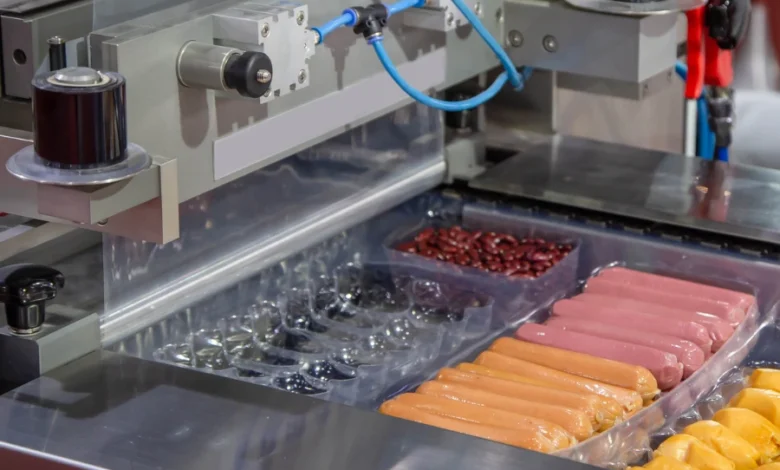Innovative Uses of Thermoformed Vacuum Plastic Parts in the Food Industry

Introduction: Enhancing Food Packaging and Processing Efficiency
Innovations in thermoformed vacuum plastic parts have revolutionized the food industry, offering versatile solutions to enhance packaging efficiency, product freshness, and consumer convenience. From packaging to processing, thermoformed vacuum plastic parts find diverse applications across various segments of the food industry. This article explores the innovative uses of thermoformed vacuum plastic parts and their impact on food packaging, processing, and sustainability.
Advantages of Thermoformed Vacuum Plastic Parts in Food Industry
Thermoformed vacuum plastic parts offer thermoforming companies numerous advantages that make them ideal for use in the food industry:
1. Enhanced Product Protection:
Thermoformed vacuum plastic packaging provides a barrier against contaminants, moisture, and oxygen, extending the shelf life of perishable food items such as meats, cheeses, and produce.
2. Customized Packaging Solutions:
The flexibility of thermoforming allows for the creation of custom-shaped packaging trays and containers tailored to specific food products, optimizing space utilization and minimizing packaging waste.
3. Improved Visual Appeal:
Transparent thermoformed packaging enhances product visibility, allowing consumers to inspect the freshness and quality of food items before purchase, thus influencing their purchasing decisions positively.
4. Cost-Effective Production:
Thermoforming processes enable high-speed production of lightweight yet durable packaging solutions, offering cost advantages over traditional packaging materials such as glass and metal.
Innovative Applications in Food Packaging
1. Modified Atmosphere Packaging (MAP):
Thermoformed vacuum plastic trays are commonly custom thermoforming used in MAP systems, where the atmosphere within the package is modified to extend the shelf life of perishable foods. MAP helps preserve the freshness and flavor of food products by controlling gas composition and minimizing oxidative reactions.
2. Convenience Packaging:
Single-serve and portion-controlled packaging solutions made from thermoformed vacuum plastic parts cater to the growing demand for convenience and on-the-go consumption. These packages are widely used for snacks, salads, and ready-to-eat meals, offering consumers convenience without compromising freshness.
3. Sustainable Packaging Alternatives:
Thermoformed vacuum plastic parts can be manufactured from recyclable materials and designed for easy disposal or recycling, contributing to sustainability efforts in the food industry. Additionally, lightweight packaging reduces transportation costs and carbon emissions, further enhancing environmental sustainability.
Innovative Applications in Food Processing
1. Molded Trays for Food Processing:
Thermoformed vacuum plastic trays are utilized in food processing facilities for handling, sorting, and transporting food items during various stages of production. These trays offer durability, cleanliness, and ease of handling, ensuring hygienic processing and preventing product contamination.
2. Custom Molds for Food Production:
Custom-designed molds enable the production of thermoformed vacuum plastic parts tailored to specific food processing requirements. From chocolate molds to bakery trays, custom molds facilitate efficient production processes and consistent product quality.
3. Vacuum Formed Inserts for Food Equipment:
Thermoformed vacuum plastic inserts are used in food equipment such as packaging machines and food processing tools to improve efficiency and product yield. These inserts provide precise product placement, reducing downtime and waste during production.
Conclusion: Driving Innovation and Sustainability in the Food Industry
Thermoformed vacuum plastic parts have emerged as indispensable components in the food industry, offering innovative solutions to enhance packaging, processing, and sustainability. From extending shelf life to improving product visibility and reducing environmental impact, thermoformed packaging plays a crucial role in meeting consumer demands and industry standards. As technology continues to advance, the food industry can expect further innovations in thermoformed vacuum plastic parts, driving efficiency, and sustainability across the supply chain.
FAQs
- Are thermoformed vacuum plastic parts safe for food packaging?
- Yes, thermoformed vacuum plastic parts are manufactured using food-grade materials and comply with regulatory standards for food contact.
- Can thermoformed packaging be recycled?
- Many thermoformed packaging materials are recyclable, contributing to sustainability efforts in the food industry.
- How do thermoformed vacuum plastic parts extend the shelf life of food products?
- Thermoformed vacuum plastic packaging creates a barrier against moisture, oxygen, and contaminants, preserving the freshness and quality of food items.
- What are some examples of innovative thermoformed packaging solutions in the food industry?
- Examples include modified atmosphere packaging (MAP), convenience packaging for on-the-go consumption, and sustainable packaging alternatives.
- How do thermoformed vacuum plastic parts contribute to food processing efficiency?
- Thermoformed trays, molds, and inserts streamline food processing workflows, facilitating handling, sorting, and transportation of food items while minimizing waste.


